Our fellow foundations:
GHR Foundation | Enkel Foundation | Opus Foundation | Opus Prize
We acknowledge our presence on the traditional land of the Anishinaabe and Dakota People.
Dear Community,
Building on a future where child well-being contributes to strong families and communities reflects the spirit of the Better Way Foundation—and builds on the legacy of our founders Gerald and Henrietta Rauenhorst, who believed in the inextricable links between business and community, healthy children, and strong families.
In their 60 years together, Gerry and Henrietta showed that authentic partnership requires trust, transparency, and mutual understanding of and respect for diverse perspectives. Today, Better Way honors them in our approach to grantmaking and investments.
Sample progress in 2023:
Together with our partners we lean into growth and learning; the first phase of our Evaluation Framework—launched last year—examines us as a partner and how we show up. We also consider the deeper impact of culturally based work beyond the project at hand, examining what it means to ECD broadly and the greater community.
There is a Dakota proverb that reads, “We will be known forever by the tracks we leave.” At Better Way, we both follow the tracks of Gerry and Henrietta—and forge new ones in their name, alongside our partners.
Warmly,
Karen Rauenhorst Nicholas Banovetz
Chair Executive Director
Mission
A family foundation, rooted in catholic social values, Better Way Foundation invests in systemic, holistic, and evidence-based approaches that support the positive development of all children.
Vision
Our partners are finding a better way to build a future where child well-being contributes to strong families and communities.
We are grateful for and humbled by the opportunity to collaborate with Indigenous leaders and communities as we strive to be an ally for high-quality, community-driven, culturally rooted ECD.
Our partners’ solutions speak to resiliency and ingenuity, efforts that are restoring and preserving Native languages, cultures, heritage, and, most importantly, that help Indigenous children and communities thrive. As you explore partners’ stories on this page, here are also sample numbers and progress that speak volumes about their impact.
Together, we are forging a better way forward, one rooted in learning and solidarity.
As we lean into growth and learning, we initiated the first phase of our Evaluation Framework in 2023. We intentionally focused on assessing our role as a partner and how effectively we support Indian Country. This work, paired with open lines of communication with grantee and ecosystem partners informs several reflections and opportunities, including:
We look forward to sharing further insights as we continue to learn from our evaluation efforts—and partners—in the future.
Our partners are building a brighter future for children. Through strategic partnerships, visionary leaders and organizations build and strengthen culturally holistic programs that center on child well-being.
“Better Way works alongside wonderful organizations that honor the past and make great strides to restore and preserve Native languages and cultures. As stewards of philanthropic resources, we have the pleasure to support the growth and development of educational programs for Native children.
We recognize the resilience, wisdom, and cultural richness our partners bring to young children and the broader landscape of early childhood development. Through collaborative efforts, we strive to support meaningful change, ensuring a brighter, more empowered future for generations to come.”
Tarajean Yazzie-Mintz
Board Member
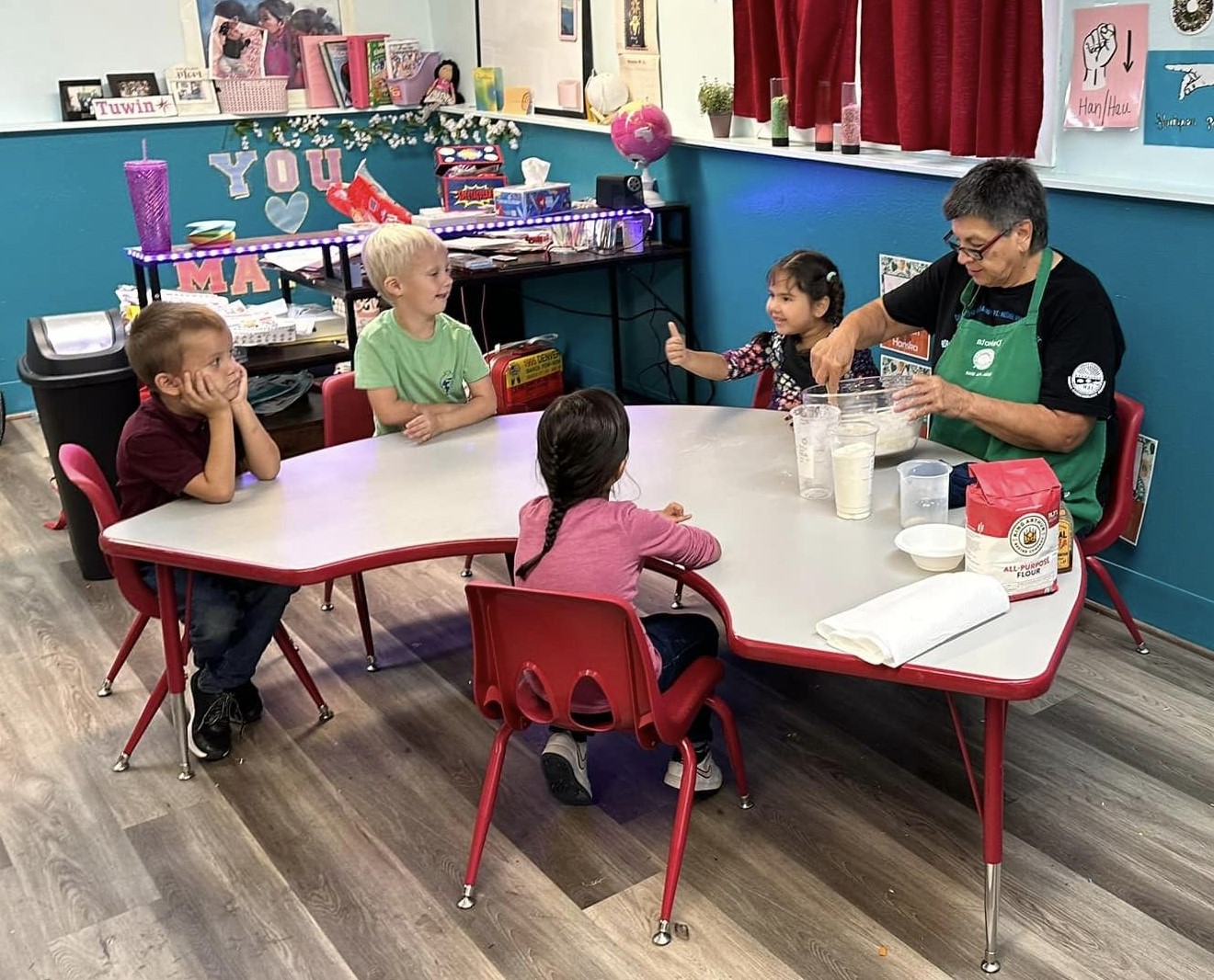 We invest in, work alongside, and learn from Indigenous leaders and communities. Our partners represent resiliency and ingenuity, prioritizing areas such as revitalization of Native languages and cultures in curricula and educator professional development so more young children benefit from enriching, culturally centered early education opportunities.
We invest in, work alongside, and learn from Indigenous leaders and communities. Our partners represent resiliency and ingenuity, prioritizing areas such as revitalization of Native languages and cultures in curricula and educator professional development so more young children benefit from enriching, culturally centered early education opportunities.
This year we welcomed two new partners, Oceti Sakowin and Weetumuw School, as part of our expanded grantmaking strategy to support Indigenous ECD.
Growing together to strengthen Indigenous education at the NACA Inspired Schools Network
Better Way funding is helping NISN schools create ECD resources, as well as the development and implementation of culturally relevant evaluation to understand program effectiveness and opportunities for refinement.
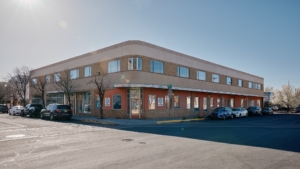
NISN office
Pole beans need a support to grow. It’s a lesson participants in NISN’s resident farmer training and farm-to-school programs learn. Located north of Albuquerque, on the original homelands of the Tiwa and Keres people, the farm hub offers new programming and curriculum to students at both NISN-network and non-network schools. Curriculum development is just one initiative gaining traction at NISN since the organization decided to deepen its strategic and cultural supports for its 13 existing schools.
As the Senior Director of School Supports, Zell Humetewa is a trellis for school leaders—who include everyone from the custodian to the principal. Together they create an individualized, data-driven plan to improve how their school fosters the spiritual, linguistic, academic, and holistic growth of students. For one school, the focus might be lesson planning, for another it’s teacher coaching or facilities development. According to Zell, while the structural needs of each school vary, what’s consistent is their respective knowledge about how best to reconnect and re-inspirit their communities to create a model of Indigenous education that reflects their culture.
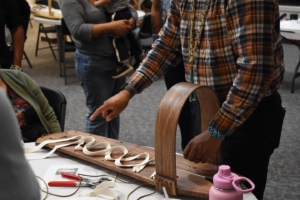
NISN’s member school Saad K’idilye hosts Cradle Board Workshop for students & families
While NISN schools promote Indigenous culture, identity, and community investment—they also provide rigorous academic curriculum aimed at college preparation. Executive Director Duta Flying Earth says their schools offer a “both-and model.” Students speak their language, know when to acknowledge elders and employ critical thinking in terms of community. Their capstone project—now adopted by the state of New Mexico as a part of graduation – documents learning in a way that’s meaningful to the students and the “powers that be.”
In a spirit of continuous improvement, NISN’s Growing Together Fellowship brings together school administrators and staff from all the schools once per month. During these convenings, participants share their experiences, learning from each other and nurturing their collective vision for Indigenous education. For Zell that dream is realized when she sees Diné children eating, speaking, and learning at a NISN school—and hears Diné spoken with pride.
As NISN helps nurture the growth of school options for Indigenous youth, it’s making its resources publicly available for replication, including an online database of free curricula and reports.
Little Earth Residents Association: Culturally based mental health care heals an urban Native community

LERA community entrance
Joe Beaulieu thought he’d resort to begging people to access the Noojimowin Counseling Program. Instead, the program reached capacity within six months of its early 2023 start at Little Earth Residents Association, or “LERA,” where Joe is the executive director. Some 90 people enrolled in the holistic, culturally based program—half of whom are youth.
“After COVID, severe mental health issues impacted people of all ages in our community,” says Joe, who is a Red Lake Band of Ojibwe Tribal member. “To heal, we needed to reconnect people and better communicate because our varied programs often serve the same families.”
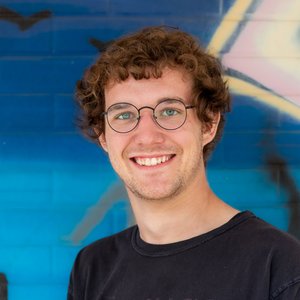
Daniel Vittera, Noojimowin Counseling Program Director
One such program is Baby’s Space, where Noojimowin Counseling Program’s director Daniel Vittera was previously a toddler and preschool teacher. The children in his original classroom are now in first and second grade. Some join him for one-on-one counseling sessions, while others participate in groups or classes. Across the options, the program follows the conscious discipline methodology, which is relationship based and uses an individual’s definition of trauma informed instead of a general one. Children learn how to react and care for themselves. Using this approach, Daniel promotes joy, happiness, and well-being by celebrating what’s good—while processing what’s difficult.
To strengthen the practices, Daniel partners with his colleagues who work with the parents and caregivers of the children he sees. That way they, too, can use the approach at home and increase the likelihood of lasting change. Already the team is seeing the mental health support for young children facilitating strong PreK-to-kindergarten transitions.
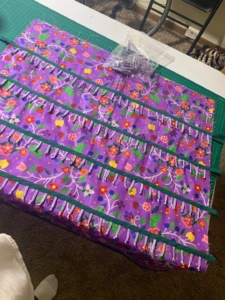
Jingle dress creation during a Community Healing workshop—LERA partners with elders to provide jingle dresses for youth in the counseling program
Daniel’s long-term presence and continued relationship with the children and families builds trust. For Daniel, that trust showed when a young boy from his former preschool class built up the confidence to go down a water slide. The first few visits he barely left Daniel’s side; one time he got to the top and turned around. Then, one day he simply said, “I’ll do it.” Pure joy and pride radiated from the boy as he convinced his reluctant friends to try it, too.
Children and adults both need time to test the water in new adventures, so Daniel and the other counselors meet people where they are. They offer a ladder to mental health services like group sessions or classes, so people feel comfortable diving into one-on-one counseling.
One example is Daniel’s collaboration with the Little Earth Boys & Girls Club, which serves as an extension of the counseling program. Together they developed a trauma-informed and culturally based curriculum that is flexible and adaptive to meet the children’s needs and comfort levels.
“We embed culture in everything we do because culture is healing,” says Joe. “We’re bringing back traditions and teachings our people have passed down to lead us to the good life our ancestors always wanted for us, whether it’s a drum-making class for little kids or a Jingle Dress class for adults. With 38 Tribes represented at Little Earth, we invite people to create the programs with us, giving them agency in building a supportive and caring community.”
Indigenous Montessori Institute is building community support for Indigenous Montessori education
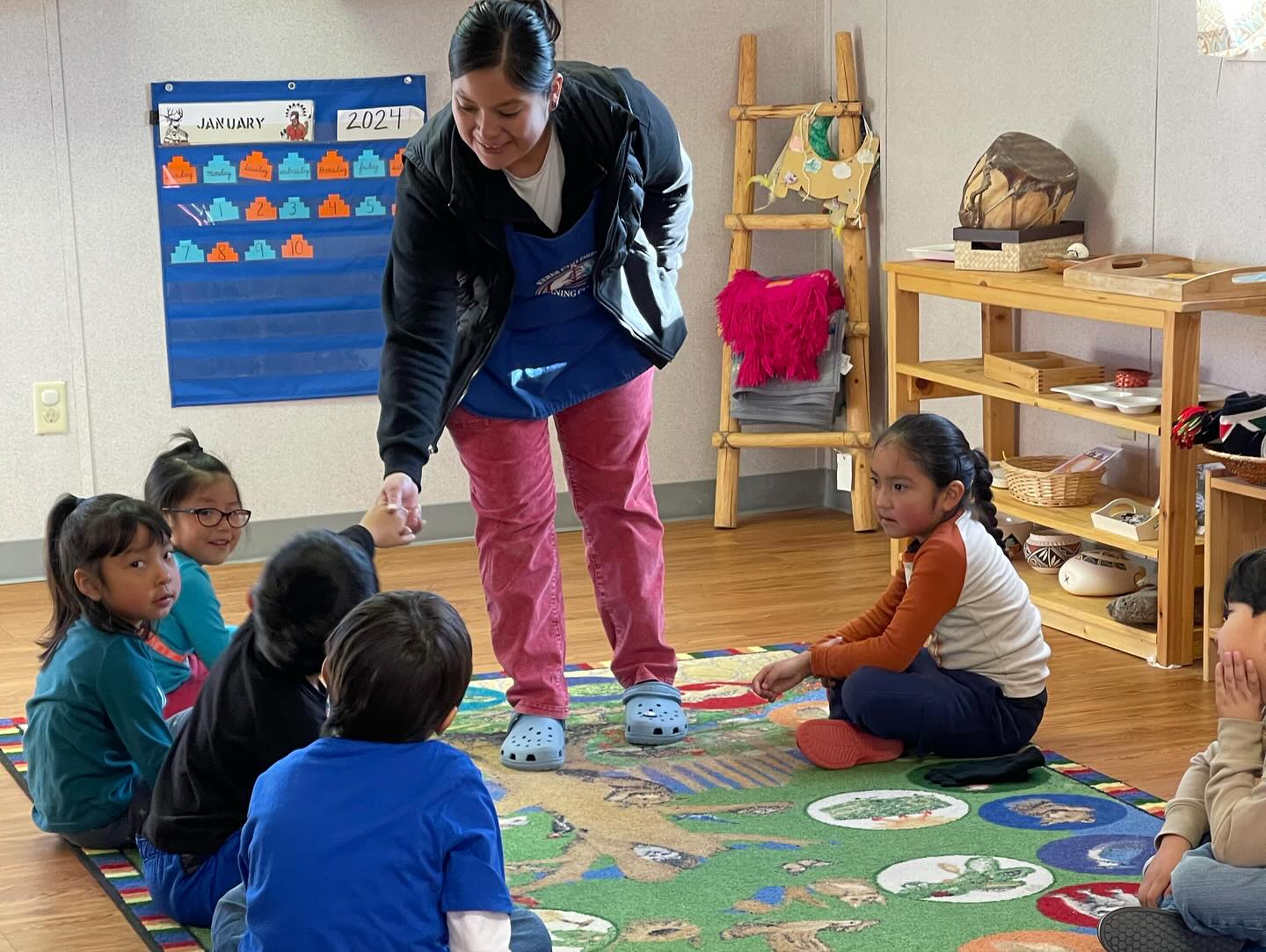
KCLC’s ECD program
Cochiti children spoke Keres in their homes before colonization; parents taught young children through dialogue in the kitchen, sharing stories and narrating their daily lives. For the founders of Keres Children’s Learning Center in Cochiti Pueblo, N.M., traditional public schools serve as a continuation of assimilation, cutting off language and culture from Indigenous children. These visionaries set out to revitalize the Keres language and Cochiti culture, teach their values–and serve as a model for Indigenous education.
When KCLC co-founder Trisha Moquino (Cochiti/Santo Domingo/Ohkay Owingeh) researched educational models to build KCLC, she discovered that Montessori aligned well with Indigenous philosophies, particularly with respect to language development and acquisition. Trisha created the primary classroom first, making it immersion based, which is congruent with research that shows zero to six years old is the best time to learn a language. The approach for the early years also mirrors how Cochiti parents taught their children and uproots western traditional education with the latter’s emphasis on teacher-directed learning, memorization, and testing.
At the same time, KCLC leaders recognize the need for strong academics and western approaches, which is why they developed a dual-language approach in their elementary and secondary levels. Children learn to read and write in English so if they transition out of KCLC, they are on track with their academics.
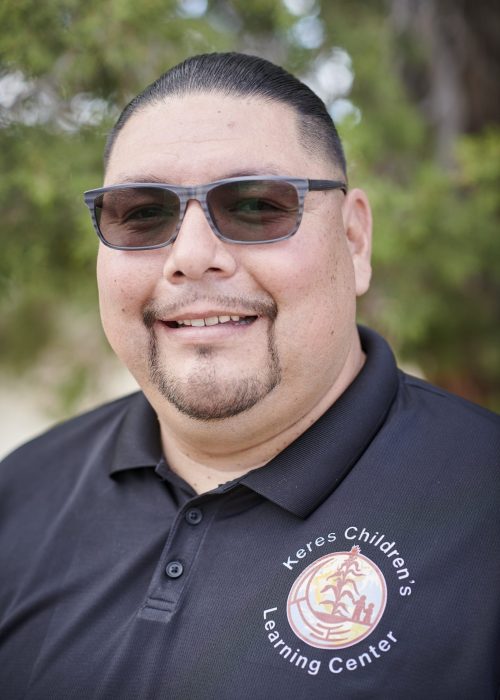
Dr. Curtis Chavez, CEO in Training
“While English is dominant in the lives of our children, that shouldn’t be at the expense of culture and language,” says Dr. Curtis Chavez, Director of Advancement/CEO in Training. “We make western achievement standards relevant only when it serves the whole child.”
The whole-child approach KCLC pursues in the classroom also reflects in the supports leaders have created around their educational model including:
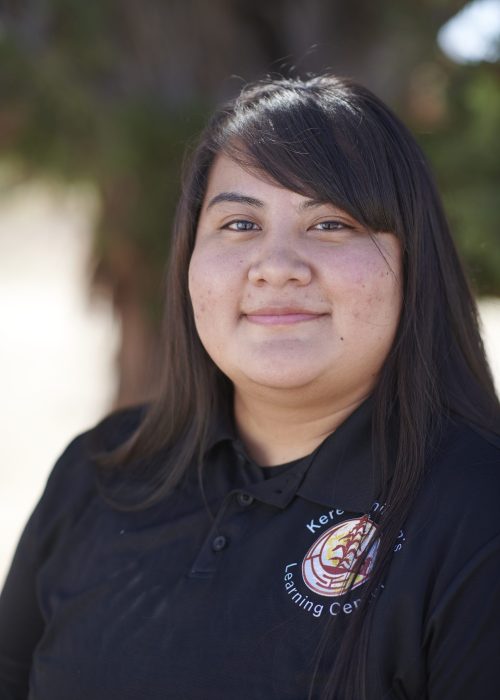
Povi Mitchell, IMI Director
“It’s not enough to create an institute to support KCLC,” says Eileen “Povi” Mitchell, Director of IMI. “We need to create the culture, infrastructure, and environment that will support it and the pipeline of resources that will sustain it–and parents are a critical part of what we’re doing. Colonial schooling disrupted parenting for Native families, so we have a gentle and loving approach to parents because KCLC parents have taken a first step toward pursuing a different approach for their children.”
Through IMI’s teacher training and professional development workshops, KCLC prepares and supports Indigenous and non-Indigenous education leaders across the country to create and implement school models that exercise educational sovereignty and reflect their own communities’ languages, values, and ideas of achievement using Indigenous knowledge systems. In 2023, its eighth annual Native Language Symposium drew 287 attendees: 26 Tribal communities and 20 schools were represented, with the youngest attendee being 17 years old and the oldest being 75.
“We’re here to stand for our children and reclaim them back so they have the opportunity to learn in Indigenous ways,” says Povi. “We’re trying to be the voice and model for Indigenous people around the country to do the same with their children and their education.”
A major accomplishment in 2023 for KCLC is the thoughtful and strategic succession planning the organization is undertaking as co-founder Trisha Moquino prepares to step down after 18 years of leading KCLC. For the good of herself and her family, she is going to take on one job, working with Povi Mitchell at IMI. Dr. Curtis Chavez will become CEO in June 2024.
C̣aƞṡayapi Waḳaƞyeża Owayawa Oṭi is revitalizing identity and sovereignty through language
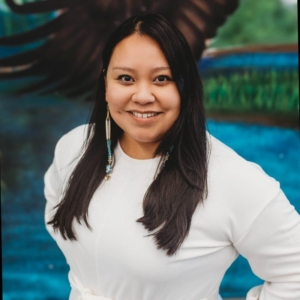
Vanessa Goodthunder | Executive Director
Vanessa Goodthunder loves when the children at C̣aƞṡayapi Waḳaƞyeża Owayawa Oṭi, a Dakota immersion Early Head Start and Head Start, call her Sna Sna Wiƞ, her Dakota name. “That’s what excites me most,” says the school’s director, who is from the Lower Sioux Indian Community in Morton, Minn.
Vanessa looks forward to the day when she hears people laughing and joking in Dakota as a matter of course–and to the day when they no longer need Dakota teachers because children hear and learn it from birth.
But until then Vanessa is pushing to build fluency among Dakota speakers; all progress builds Dakota language recovery, which Vanessa sees as a source of healing. A highlight for Vanessa in 2023: 18 members of her team boosted their fluency by 0.5-to-1 level on a language proficiency scale. Stronger and more fluent teachers will have a significant impact on the next generation.
Every day in the classroom Vanessa sees the difference CWOO is making. A little girl fell one day, and another little girl said, “Hmm, Ṣicaya,” which means, “that’s too bad.” According to Vanessa it was super sassy, “But they did it sassy in the language! To me, that’s their pride and identity coming back, which will help them throughout their whole life.”
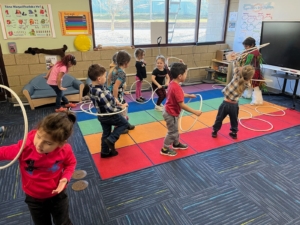
CWOO students learn traditional singing, dancing, and drumming
Vanessa says that every day the children are speaking and drumming more. They answer their pretend phones with “Táku” or when sweeping they say, “Kahiƞta,” and the children say it all with feeling.
There is demand for the education experience–and results–CWOO offers. CWOO started with 32 children in 2018 and has grown to serve 82 children; the waitlist is currently full.
The Lower Sioux Indian Community is partnering with the three other Dakota Tribes to dedicate the time and resources to create speakers and teachers. Together they are taking the Dakota language out of near extinction, increasing Dakota learners and speakers from 20% in 2019 to 33% today.
“There are only five first language speakers remaining–and they are all over 67 years old,” says Vanessa. “Research shows it takes 2,000 hours to get to intermediate fluency, so at one hour per week it would take 56 years. We need to do more now.”
Driving that “more now” is a highly competitive grant CWOO received from the Administration for Native Americans at the U.S. Department of Health and Human Services’ Administration for Children and Families. Lower Sioux was one of two grant partners selected for the Esther Martinez Immersion Program in 2023. The five-year grant will help them grow more teachers through a master speaker apprenticeship program and a collaboration with St. Cloud State University that offers a path to teacher certification. In March 2023, Vanessa and her team worked 50-hour weeks to secure the grant, one they had applied to but not received in 2020.
It was all worth the effort. Vanessa says, “I work here because my whole life goal is to raise the next generation of language speakers and grow the whole community so we can revitalize not only our identity but our sovereignty.”
Sample progress, year-over-year…
Head Start: Social emotional learning–29% to 64%; literacy–4% to 16%
Early Head Start: Social emotional learning–48% to 77%; physical health–10% to 31%; language–52% to 73%; math–55% to 81%
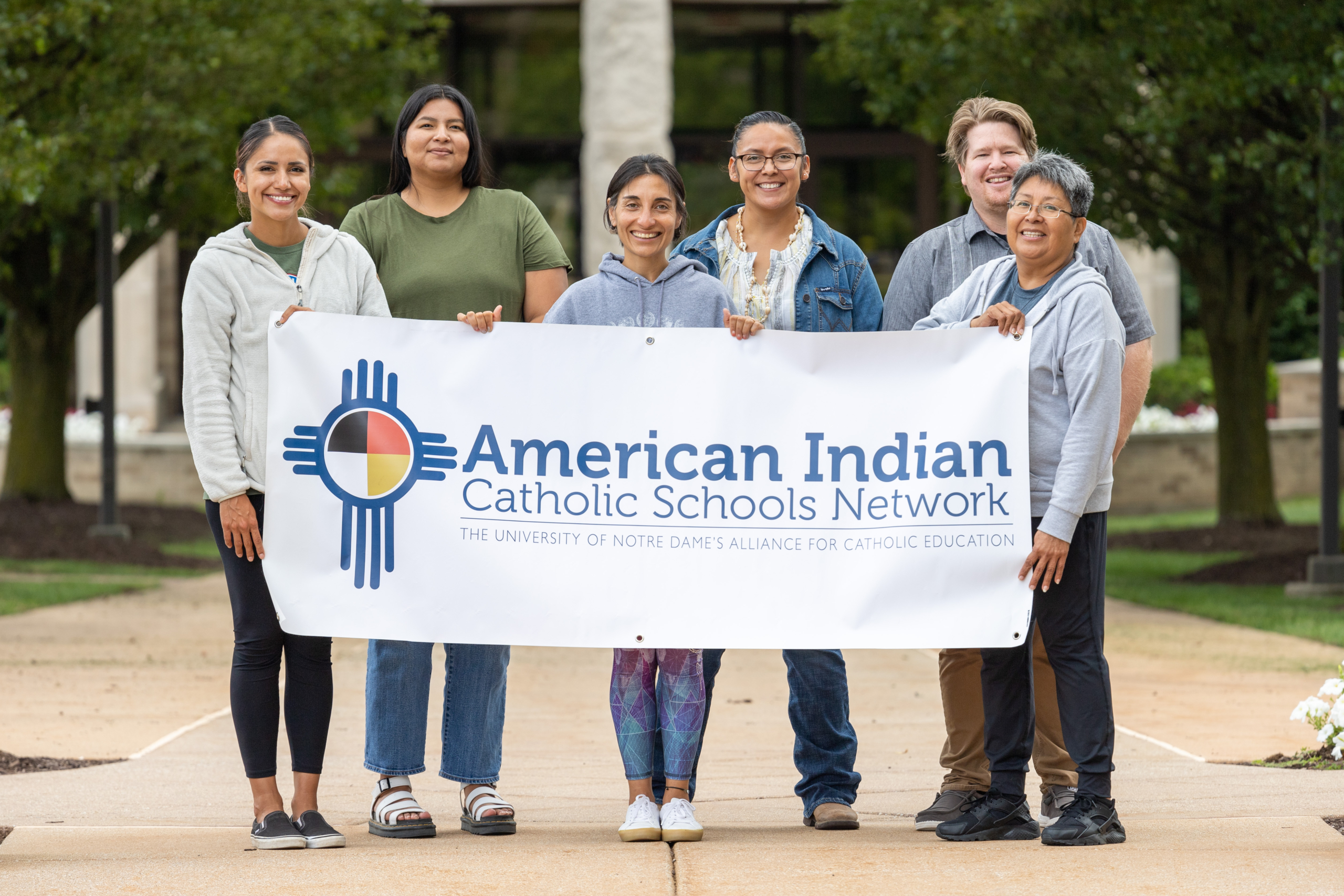 The American Indian Catholic Schools Network helps advance professional development, marketing, and Truth & Healing initiatives across former Catholic boarding schools to address historical injustices toward Indigenous Peoples. Support and resources are offered through its Holy Cross Fellows Program, a summer institute, monthly professional development calls, and seasonal retreats. Through direct grants and strategic partnership, we support member schools to provide culturally relevant education and a student experience that builds pride, understanding of heritage and culture, and Native language skills. Collectively, AICSN serves 19 Tribal communities.
The American Indian Catholic Schools Network helps advance professional development, marketing, and Truth & Healing initiatives across former Catholic boarding schools to address historical injustices toward Indigenous Peoples. Support and resources are offered through its Holy Cross Fellows Program, a summer institute, monthly professional development calls, and seasonal retreats. Through direct grants and strategic partnership, we support member schools to provide culturally relevant education and a student experience that builds pride, understanding of heritage and culture, and Native language skills. Collectively, AICSN serves 19 Tribal communities.
“AICSN helps to minimize the isolation when dealing with issues that arise in education, especially those that are pertinent with Indigenous education, such as the support we receive when connecting leaders, teachers, and students to meet other schools with similar cultures, ideas, experiences, and issues revolving around tribal culture.”
Antonio Trujillo
Principal, St. Joseph Mission School
Responding to the evolving needs of the student experience at De La Salle Blackfeet School
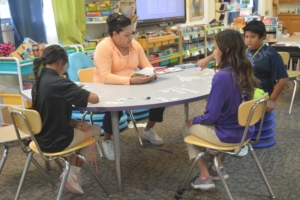
Little Flower Academy
Little Flower Academy was established to rectify disparities in learning outcomes. The name ‘Little Flower Academy’ reflects De La Salle Blackfeet School’s belief in the power of small gestures in education, nurturing curiosity, creativity, and a love for learning.
By enhancing opportunities for community and culture building, nurturing a supportive learning environment, and implementing highly differentiated instruction to bridge learning gaps, the academy seamlessly aligns with the needs of both students and the wider community.
The academy has been instrumental in providing flexibility as students transition to middle school, facilitating a smoother educational journey. Key features include repurposing former classrooms into a spacious environment for a combined 4th and 5th grade classroom. With adaptable seating arrangements that foster collaborative learning, a revamped grading system ensuring readiness for progression, and a dynamic approach to interdisciplinary project-based learning, every aspect of Little Flower Academy is tailored to ignite curiosity and nurture growth.
But that’s not all. Flexible class scheduling and strong emphasis on nurturing creativity, literacy and life skills cater to the unique needs of younger students, ensuring they thrive both academically and emotionally. Through this initiative, De La Salle Blackfeet School has seen progress in addressing academic skills, nurturing social-emotional learning, and instilling a resilient growth mindset in students.
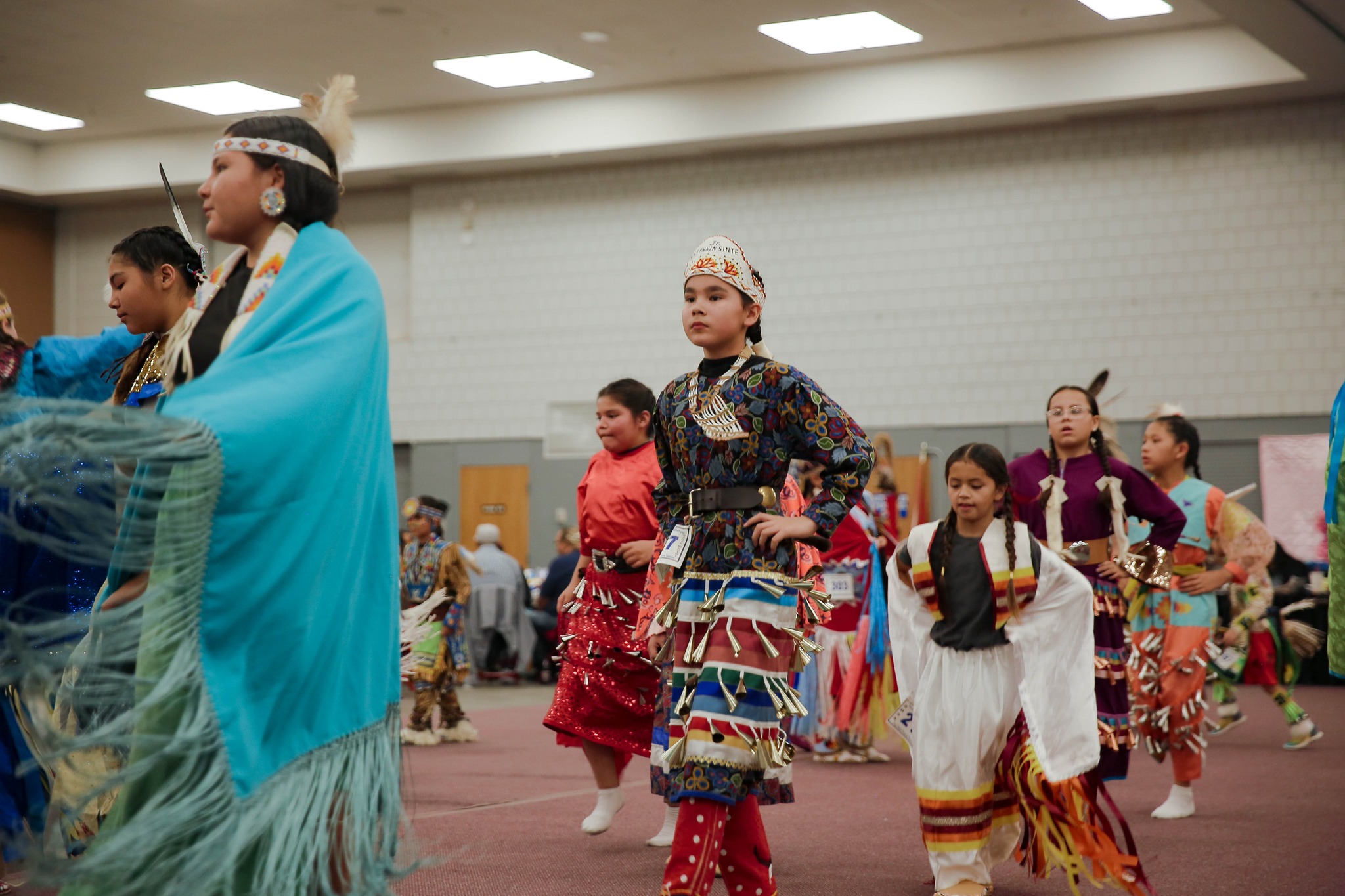 Intergenerational trauma stemming from boarding schools and other injustices continue to affect Indigenous Peoples. As Better Way deepens support for Indigenous education, we find tremendous purpose in making adjacent grants available to support Truth & Healing in Indian Country.
Intergenerational trauma stemming from boarding schools and other injustices continue to affect Indigenous Peoples. As Better Way deepens support for Indigenous education, we find tremendous purpose in making adjacent grants available to support Truth & Healing in Indian Country.
In 2023 we made an explicit, multi-year Truth & Healing grant to an AICSN member school to help address past injustices and support healing within Native communities (of the network schools, several are actively engaged in Truth & Healing initiatives and many are laying the groundwork).
Maȟpíya Lύta: Truth & Healing through stories and language
Truth &Healing at Maȟpíya Lúta is several years underway, and it has no definitive end point as restorative justice and culture revitalization is ongoing work that builds and strengthens over time.
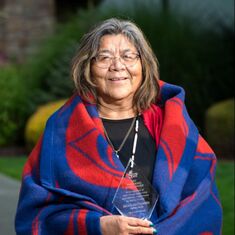
Cecelia Fire Thunder, Executive Director of Truth & Healing
For Cecelia Fire Thunder, her role as the new executive director of Truth & Healing at
Maȟpíya Lύta/Red Cloud Indian School is “the most impactful work” she has done in 50 years. The Oglala Sioux elder has been a nurse, a domestic abuse advocate, community health planner–and was the first female president of her Tribe.
She also is a former student and boarder of Holy Rosary Mission School, now Maȟpíya Lúta.
Cecelia and her team have completed 55 interviews of men and women who were fellow boarders, living and learning among the Jesuit priests and Franciscan nuns, respectively. In the conversations, there’s no guide, just a request to share the “good, the bad, and the ugly” of what they recall—and to be honest about whatever they need to share. While their childhood and life experiences differ, participants find healing in the process of remembering, sharing, crying, and smudging.
Cecelia is also supporting full-time research coordinator Gabrielle Guillerm, PhD, as she explores the Holy Rosary Mission School Collection at Marquette University. Together they are publishing the research into a book, folding in the oral histories Cecelia collected. Language and culture will be a core theme in the book, though Cecelia says, “Our story will be different.”
What’s different is evidence of cooperation and partnership between the Lakota and the Jesuits. Records from the Franciscan Sisters show that Masses held at the beginning of each conference featured singing in both Latin and Lakota. Cecelia says Father Eugene Buechel, who was an itinerant Jesuit missionary and a superintendent of Holy Rosary Mission School, spent years on Pine Ridge Indian Reservation creating the most comprehensive Lakota dictionary.
“When you learn a language, you can’t help but know a people,” says Cecelia. “While the Jesuits tried to make us less Indian, we made Lakota out of Jesuits.”
Echoes of compassion: A reunion of two former boarding school students
Maȟpíya Lúta’s community conversation
Maȟpíya Lúta has convened numerous community conversations around Truth & Healing. At a recent gathering of Maȟpíya Lúta’s community advisory council, two former boarders who were near each other in years during their time at Holy Rosary Mission School met again for the first time in perhaps decades. As they embraced one said to the other, “I want to say first and foremost, thank you being at Holy Rosary, and I especially want to thank your mom.” She then turned to the whole group, “This woman’s mom was a laundry worker at the school and one of the few Native women who were employees of the mission. I remember when I was little here, I would be so sad after my parents left me here. I went to the laundry room,” she turned back to her former schoolmate, “your mom asked me what was wrong, and she held me and let me cry.” Tears were forming in both of the former boarders’ eyes and she continued, “I was okay because of the love your mom showed me. I’ll never forget that.” This was an incredibly powerful moment that touched the heart of everyone in the room, underscoring the beautiful power of relationships and of the presence of Native people.
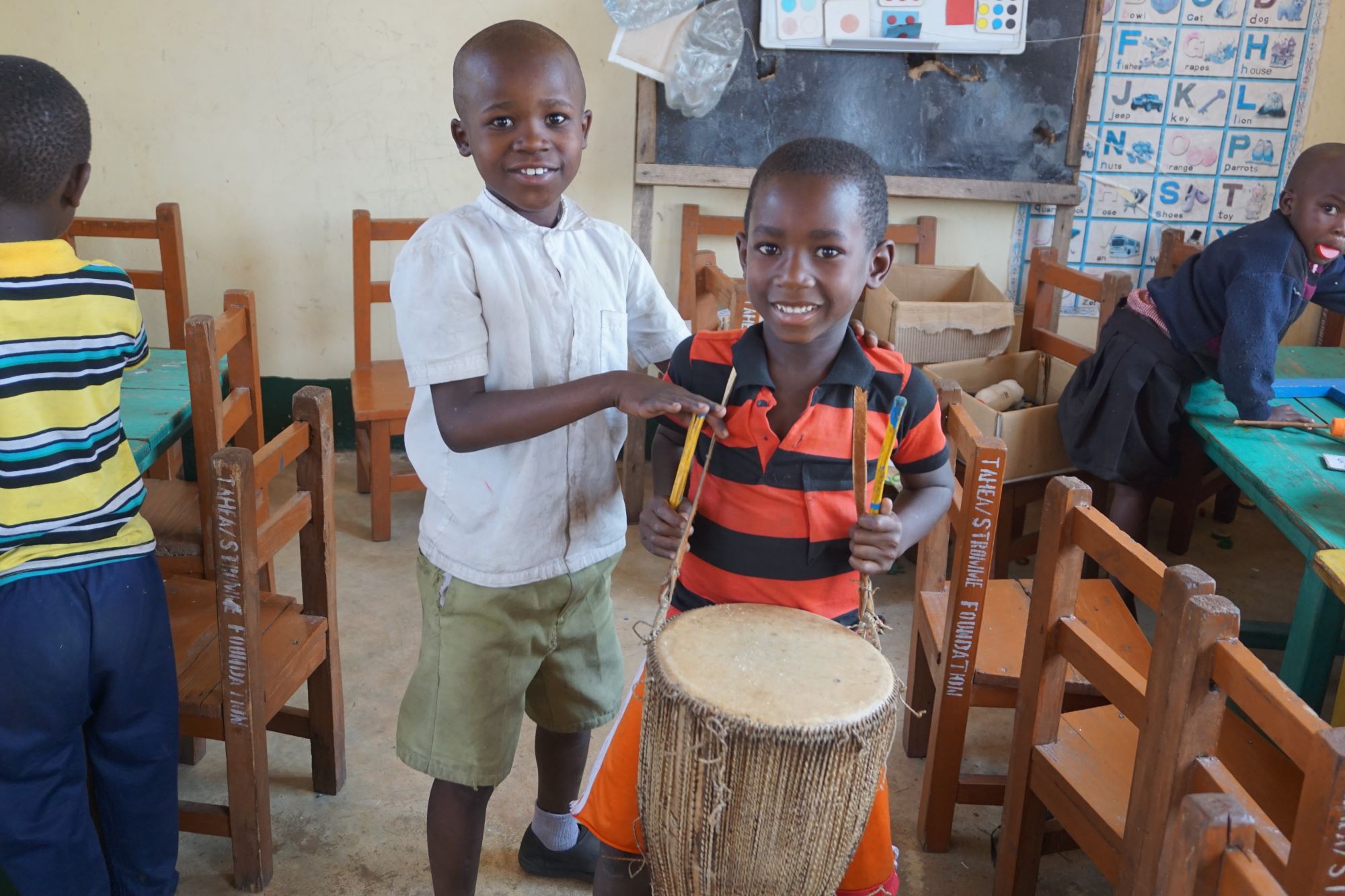 Local partners have effectively demonstrated how to build interest in, momentum for, and access to quality early education and care across a developing East African nation. After 15 years of partnership and investment in Tanzania, which concludes in 2025, we celebrate the progress made in ECD delivery and national advocacy efforts.
Local partners have effectively demonstrated how to build interest in, momentum for, and access to quality early education and care across a developing East African nation. After 15 years of partnership and investment in Tanzania, which concludes in 2025, we celebrate the progress made in ECD delivery and national advocacy efforts.
TECDEN builds critical organizational infrastructure to boost ECD access
Early childhood development experts recognize the importance—and urgency—of their work given that 90% of a child’s brain development happens at age six. Early experiences affect the development of brain architecture, which provides the foundation for all future learning, behavior, and health.
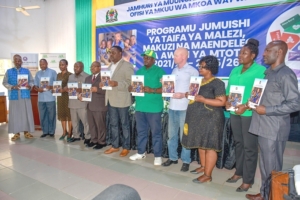
TECDEN supports launch of NM-ECD across 26 regions
Leaders of the Tanzania Early Childhood Development Network, or “TECDEN,” feel that urgency as they influence policies, programs, and practice throughout Tanzania. They also provide leadership and support to other national networks in Africa, working under the guidance of the Africa ECD Network. Principally, TECDEN coordinates non-state actors with approximately 108 members (54 regular members, 11 strategic members, and 43 affiliate members). The network also coordinates the National Multi-Sector Early Childhood Development Programme across 26 regions.
TECDEN Executive Director Mwajuma Rwebangila appreciates the foundational role the organization plays nationally, in effect as Tanzania’s ECD umbrella for civil society organization. As a strategic partner, Better Way Foundation helped guide TECDEN to strengthen its internal policies and structures to effectively implement its own operations.
The past several years have been critical to position TECDEN as a national organization. TECDEN hired four full-time staff, raised additional revenue to move from an annual budget of $800,000 to $1.3 million, and worked to advocate for increasing investment in ECD which included engagement with Parliamentarians. Each milestone reflects TECDEN’s five-year strategic plan, which the network completed in 2023, setting a continued course for growth and increased impact.
“We’ve almost fully achieved the recommendations Better Way outlined in our comprehensive organizational review report,” said Mwajuma. “As we look forward, assessing and building the capacity of our members is a high priority. For our network to perform better and ultimately improve the lives of our children, we need to have strong members—it’s our greatest opportunity for success.”
Explore our Partnership Framework and learn more about how Better Way approaches Responsible Exit
C̣aƞṡayapi Waḳaƞyeża Owayawa Oṭi
Comanche Language & Culture Preservation Committee
Indigenous Montessori Institute
Little Earth Residents Association
Montessori American Indian Childcare Center
Oceti Sakowin Community Academy
Oglala Lakota College Lakota Head Start & Early Head Start
Pueblo of Isleta Head Start & Child Care Center
Through our investments we seek to address a broader spectrum of challenges faced by Indigenous children, both within and beyond the educational sphere, because the investment of our assets can have as much impact as our grantmaking.
We made our first Program-Related Investment in a Native CDFI in 2019 and since then have increasingly—and diligently—shifted to more impact investments across our portfolio of assets. Shifts to date:
“As a philanthropic foundation rooted in catholic social values, our growing commitment to investing in Indian Country stems from our dedication to the common good and the solidarity of all communities. And as a learning organization, we take great pride in our growing portfolio of impact investments to complement our grantmaking efforts.”
Stephanie Russell
Board Member
Akiptan “makes lending Indigenous,” jumps from $1.8 to $7 million in loans
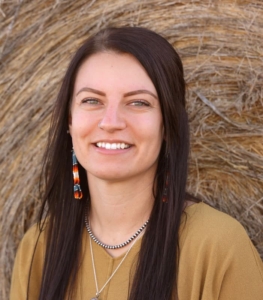
Skya Ducheneaux, Executive Director
Skya Ducheneaux grew up on a cattle ranch on the Cheyenne River Sioux Reservation in Eagle Butte, S.D. When Skya left home at 18 years old to pursue a business degree, she vowed she’d never be back. “I never wanted to work that hard again,” she says.
But she missed agriculture’s close-knit community and culture. After graduation, Skya returned home to work for the Intertribal Agriculture Council, where she was tasked with creating the first Native Community Development Financial Institution dedicated to serving Native agriculture producers across Indian Country. The driving question was “How do we make lending Indigenous?”
For Skya, Akiptan’s executive director, and her colleagues, the answer was a partnership that equally balances lender security and borrower prosperity, helping producers reinvest in themselves and grow their operations; they named the organization Akiptan, the Lakota word for together, in a joint effort, cooperatively.
In its first year, Akiptan distributed $1.8 million in loans; in 2023, Akiptan distributed $7 million.
“The demand for how we lend is astronomical–last year we received nearly $40 million in loan requests,” says Skya. “The sheer volume is tough to navigate, and our loan officers handle it amazingly well, from the technical assistance they offer to their innovation and ideas. They always come from a place of curiosity and a desire to help.”
Highlights from 2023 included breaking into new industries and going deeper into the food chain. Akiptan distributed loans to two fisheries and a pig operation, offered value-added services and increased the number of mortgages mostly in the Great Plains and Rocky Mountains. Today Akiptan has reached 28 tribal nations, with $22.2 million in capital committed and 334 loans.
While loans are Akiptan’s “bread and butter,” the programmatic side of the organization took off in 2023, according to Skya. Akiptan offers webinars, financial literacy workbooks, and trainings around succession planning, tax preparation, “Indian Lands 101,” and more. The youth programs are also flourishing–in 2023, they added a Youth Agriculture Business Plan Competition with a $2,500 prize and encouraged partners to offer paid internships.
Now that Akiptan has fine-tuned making lending Indigenous, Skya and her team are asking, “How do we address generational poverty?” Solutions to big questions are often best answered at home, where Skya is happy to be.
Nicholas Banovetz, Executive Director
Mercedes Plendl, Program Officer
Daisy Lor, Program Assistant
Karen Rauenhorst, Chair
Janine Geske, Vice Chair & Governance Chair
Stephanie Russell, Finance & Investment Chair
Tarajean Yazzie-Mintz, Program & Impact Chair
Dr. Cary Buzzelli
Cindy Hughes
Patrice Kunesh
Judy Rauenhorst Doerr
Shamsia Ramadhan
Tom Jollie, Finance & Investment Committee
Jeff Rauenhorst, Finance & Investment Committee
Mark Rauenhorst, Finance & Investment Committee
Nat Robinson, Finance & Investment Committee